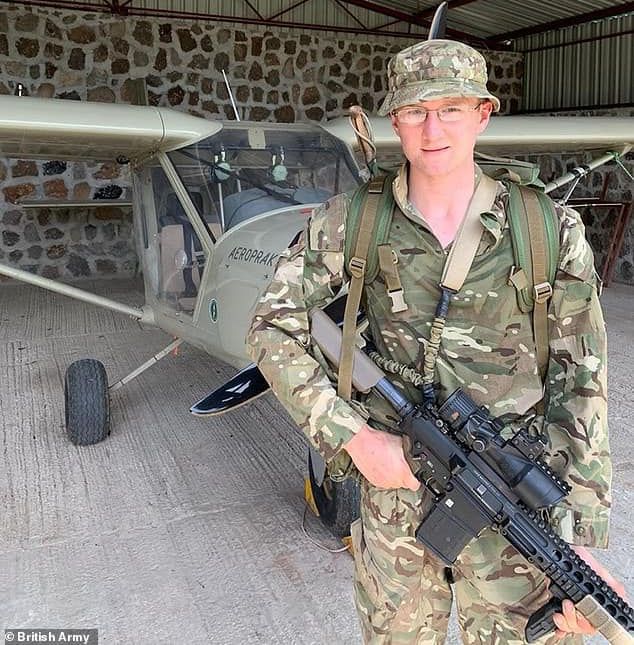UK Military’s Overseas Base Network Involves 145 Sites in 42 Countries. Encircling China? Global Military Presence
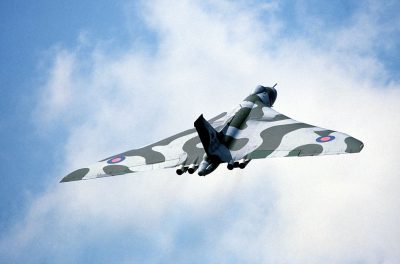
Britain’s military has a permanent presence at 145 base sites in 42 countries or territories around the world, research by Declassified UK has found.
The size of this global military presence is far larger than previously thought and is likely to mean that the UK has the second largest military network in the world, after the United States.
It is the first time the true size of this network has been revealed.
The UK uses 17 separate military installations in Cyprus as well as 15 in Saudi Arabia and 16 in Oman – the latter both dictatorships with whom the UK has especially close military relations.
The UK’s base sites include 60 it manages itself in addition to 85 facilities run by its allies where the UK has a significant presence.
These appear to fit the description of what General Mark Carleton-Smith, Britain’s Chief of the General Staff, recently termed as “lily pads” – sites which the UK has easy access to as and when required.
Declassified has not included in the figures the UK’s small troop contributions to UN peacekeeping missions in South Sudan or the Cyprus buffer zone, nor staffing commitments at NATO administrative sites in Europe or most of its special forces deployments, which are largely unknown.
The findings come days after Prime Minister Boris Johnson announced an extra £16-billion would be spent on the UK military over the next four years – a 10% increase.
The spending announcement was originally meant to be combined with a review of defence strategy, that was being championed by Johnson’s former chief adviser Dominic Cummings.
The results of Whitehall’s “integrated defence review” are now not expected until next year. Indications suggest the review will recommend a traditional British strategy of building more overseas military bases.
Last month, former Defence Secretary Michael Fallon said the UK needs a more permanent presence in the Asia-Pacific region. The current Defence Secretary, Ben Wallace, has gone further. In September he announced a £23.8-million investment to expand Britain’s army and navy bases in Oman, to accommodate the Royal Navy’s new aircraft carriers as well as many tanks.
General Carleton-Smith recently said:
“We think there is a market for a more persistent presence from the British Army (in Asia).”
His superior, Chief of the Defence Staff General Sir Nick Carter, spoke more cryptically when he said the military’s future “posture will be engaged and forward deployed.”
Encircling China?
The rise of China is leading many Whitehall planners to believe Britain needs military bases in the Asia-Pacific region to counter Beijing’s power. However, the UK already has military base sites in five countries around China.
These include a naval logistics base at Sembawang Wharf in Singapore, where eight British military staff are permanently based. The base provides Britain with a commanding position overlooking the Malacca Strait, the world’s busiest shipping lanes which are a key choke point for vessels sailing from the South China Sea into the Indian Ocean.
The Ministry of Defence (MOD) has previously told Declassified: “Singapore is a strategically important location for commerce and trade.” Singapore’s most elite police unit is recruited by British soldiers and commanded by UK military veterans.
As well as having a naval base on the rim of the South China Sea, the British military has an even more central basing location in Brunei, near the disputed Spratly Islands.
The Sultan of Brunei, a dictator who recently proposed the death penalty for homosexuals, pays for British military support in order to stay in power. He also allows the British oil giant Shell to have a major stake in Brunei’s oil and gas fields.
The UK has three garrisons in Brunei, at Sittang Camp, Medicina Lines and Tuker Lines, where around half of Britain’s Gurkha soldiers are permanently based.
Declassified files show that in 1980, British troops in Brunei were based “on land provided by Shell and in the middle of their headquarters complex”.
Special accommodation for British troops is provided through a network of 545 apartments and bungalows in Kuala Belait, near the military bases.
Elsewhere in Brunei, 27 British troops are on loan to the Sultan at three locations, including the Muara naval base. Their roles include imagery analysis and sniper instruction.
Declassified has found that the UK also has around 60 personnel spread across Australia. Some 25 of these hold defence attaché roles in the British High Commission in Canberra and at Australian Defence Department sites near the capital, such as the Headquarters Joint Operations Command at Bungendore.
The remainder are on exchange to 18 separate Australian military bases, including a warrant officer at Australia’s Electronic Warfare Unit in Cabarlah, Queensland.
Four Royal Air Force (RAF) officers are based at the Williamtown airfield in New South Wales, where they are learning to fly the Wedgetail radar plane.
Britain’s MOD is also testing its high-altitude Zephyr surveillance drone at an Airbus site in the remote settlement of Wyndham in Western Australia. Declassified understands from a freedom of information response that MOD staff visit the test site but are not based there.
Two members of UK Strategic Command, which manages British military operations across the services, and one from Defence Equipment and Support visited Wyndham in September 2019.
The Zephyr, which is designed to fly in the stratosphere and could be used to surveil China, has crashed twice during testing from Wyndham. Another high-altitude drone, the PHASA-35, is being tested by staff from arms corporation BAE Systems and the UK military’s Defence Science and Technology Laboratory in Woomera, South Australia.

Airbus also operates a ground station for the Skynet 5A military communications satellite on behalf of the MOD at Mawson Lakes in Adelaide. A British naval commander is based in the coastal city, according to a freedom of information response.
A further 10 British military personnel are based at unspecified locations in New Zealand. Parliamentary data from 2014 showed their roles included working as navigators on a P-3K Orion aircraft, which can be used for maritime surveillance.
Meanwhile in Nepal, on China’s western flank close to Tibet, the British army runs at least three facilities. These include Gurkha recruitment camps in Pokhara and Dharan, plus administrative facilities in the capital Kathmandu.
Britain’s use of young Nepalese men as soldiers has continued despite a Maoist government coming to power in Kathmandu.
In Afghanistan, where peace talks are now under way between the government and the Taliban, UK forces have long maintained a quick reaction force at Hamid Karzai International Airport in Kabul, as well as providing mentoring at the Infantry Branch School and the Afghan National Army Officers’ Academy. The latter, known as ‘Sandhurst in the Sand’, was built with £75-million of British money.
Around 10 personnel are based in Pakistan, where roles have included teaching pilots at the air force academy in Risalpur.
Europe and Russia
In addition to concern over China, military chiefs believe Britain is now locked in a permanent competition with Russia. The UK has a military presence in at least six European countries, as well as at NATO administrative sites, which Declassified has not included in our survey.
Britain continues to run four base sites in Germany that house 540 personnel, despite a 10-year drive called “Operation Owl” to scale down its Cold War-era network.
Two barracks remain in Sennelager, in northern Germany, with a vast vehicle depot in Mönchengladbach and a munitions storage facility in Wulfen on a site originally built by slave labour for the Nazis.
In Norway, the British military has a helicopter base codenamed “Clockwork” at Bardufoss airport, deep in the Arctic Circle. The base is frequently used for mountain warfare exercises and lies 350 miles from the headquarters of Russia’s northern fleet in Severomorsk near Murmansk.
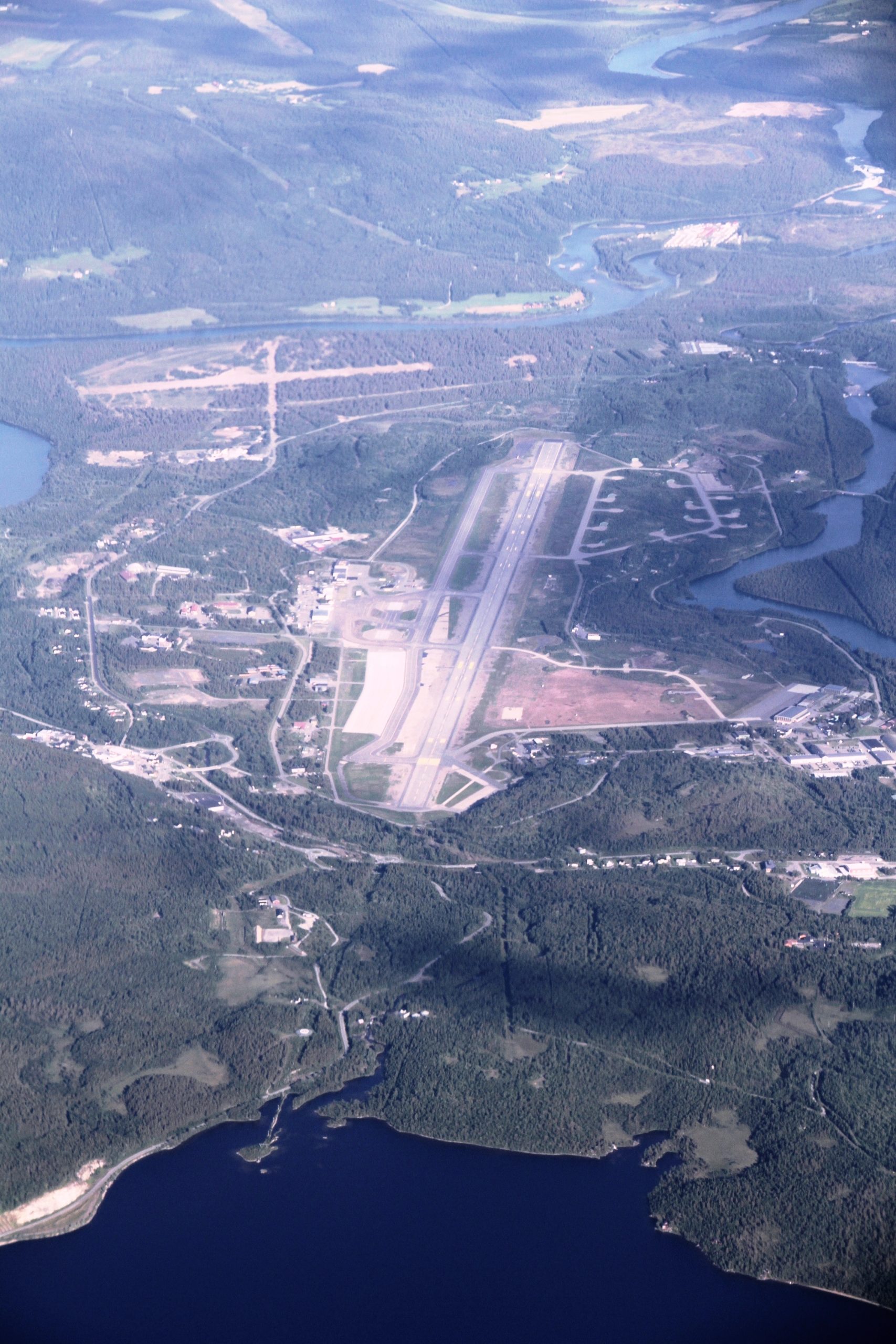
Bardufoss airport and the Andselv town, centre of the municipality of Malselv, Troms (North Norway). Photo: Wikipedia
Since the fall of the USSR, Britain has expanded its military presence into former Soviet bloc states. Twenty UK military personnel are currently on loan to the Czech military academy in Vyškov.
Closer to Russia’s border, the RAF bases Typhoon fighter jets at Estonia’s Amari Air Base and Lithuania’s Siauliai Air Base, from where they can intercept Russian jets over the Baltic as part of NATO’s “air policing” mission.
In the eastern Mediterranean, Declassified has found there are 17 separate UK military installations in Cyprus, which analysts have traditionally counted as one British overseas territory comprising the “sovereign base areas” of Akrotiri and Dhekelia, containing 2,290 British personnel.
The sites, which were retained at independence in 1960, include runways, firing ranges, barracks, fuel bunkers and spy stations run by the UK’s signals intelligence agency – GCHQ.
Declassified has also found that several of the sites are located beyond the sovereign base areas, including on the top of Mount Olympus, the highest point on Cyprus.
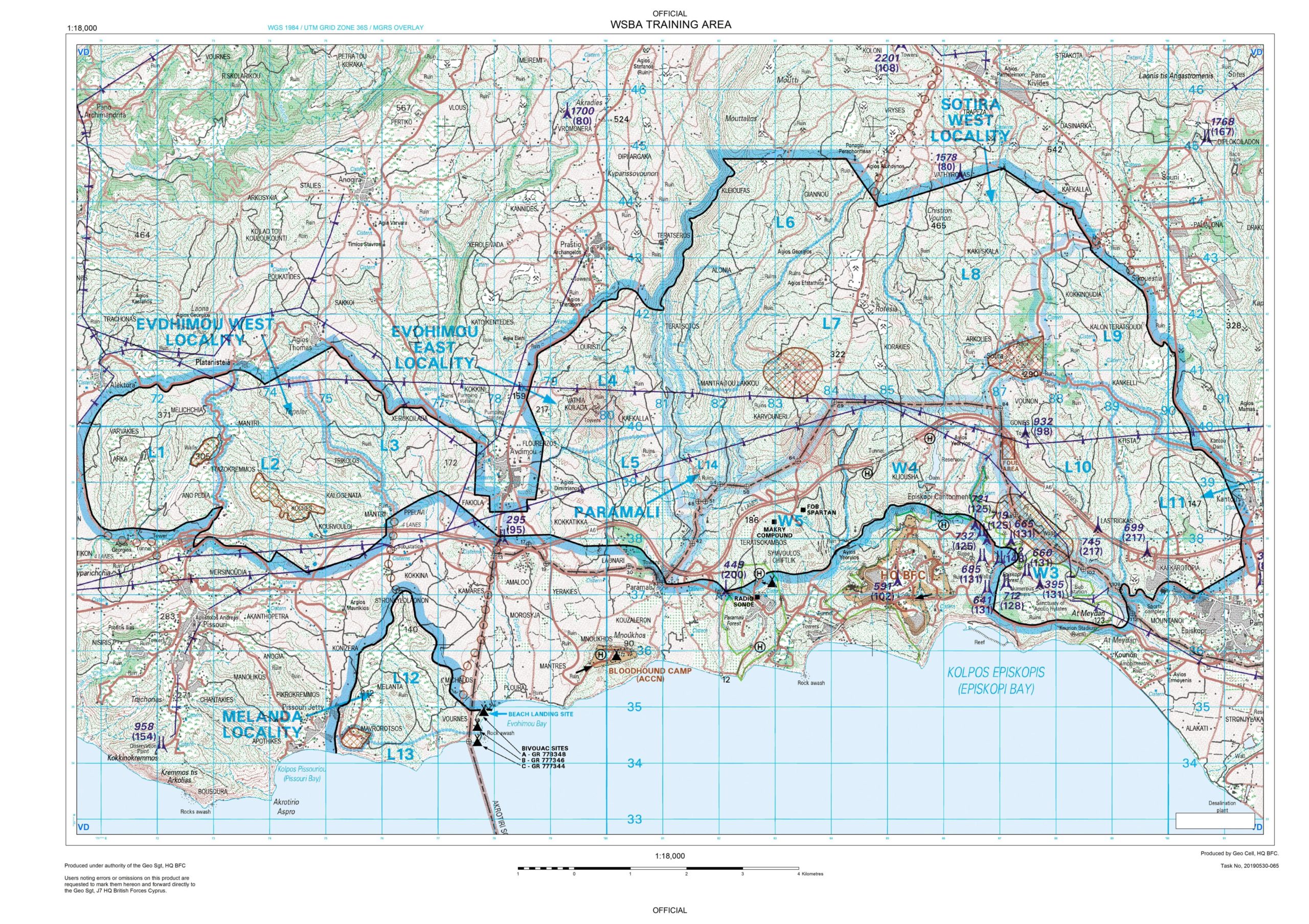
British military exercises areas L1 to L13 are outside of the UK enclave and inside the Republic of Cyprus
A map obtained by Declassified shows that the UK military can use a large area of land outside Akrotiri known as Lima as a training area. Declassified previously revealed that low flying British military aircraft have caused the deaths of farm animals in the Lima training area.
British special forces operating in Syria are believed to be resupplied by air from Cyprus, where RAF transport planes can be seen online taking off before their trackers disappear over Syria.
Little is known about the location of UK special forces teams in Syria, aside from a claim that they are based at Al-Tanf near the Iraq/Jordan border and/or in the north near Manbij.
Guarding Gulf Dictators
RAF flights from Cyprus also frequently land in the Gulf dictatorships of the United Arab Emirates and Qatar, where the UK has permanent bases at the Al Minhad and Al Udeid air fields, run by around 80 personnel.
These bases have been used to supply troops in Afghanistan as well as for conducting military operations in Iraq, Syria and Libya.
Qatar has a joint Typhoon squadron with the RAF based at RAF Coningsby in Lincolnshire which is half-funded by the Gulf emirate. Defence minister James Heappey has refused to tell Parliament how many Qatari military personnel are based at Coningsby amid plans to expand the base.
Even more controversial is Britain’s major military presence in Saudi Arabia. Declassified has found that UK personnel are installed across 15 key sites in Saudi Arabia. In the capital, Riyadh, British armed forces are spread out over half a dozen locations, including the air operations centres where RAF officers observe Saudi-led coalition air operations in Yemen.
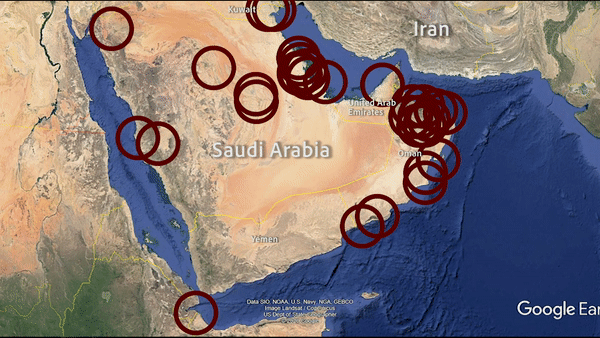
Under the Ministry of Defence Saudi Armed Forces Project (MODSAP), BAE Systems has made 73 accommodation units available to UK military personnel at its Salwa Garden Village compound in Riyadh.
RAF staff, some of whom are on secondment to BAE Systems, also serve at the King Fahad air base in Taif, which services the Typhoon jet fleet, the King Khalid air base in Khamis Mushayt close to the Yemen border and at the King Faisal air base in Tabuk where Hawk jet pilots train.
There are separate contracts for Britain to support the “special security brigade” of Saudi Arabia’s National Guard (SANG), a unit that protects the ruling family and promotes “internal security”.
British soldiers are believed to be stationed at the Guard’s ministry in Riyadh as well as at its Signals School (SANGCOM) in Khashm al-An on the outskirts of the capital, in addition to smaller teams at SANG command posts in the western and central regions at Jeddah and Buraydah.
The rest of the British personnel in Saudi Arabia are situated in its oil-rich eastern province, whose Shia Muslim majority is harshly discriminated against by the ruling Sunni monarchy.
A Royal Navy team teaches at the King Fahd Naval Academy in Jubail, while RAF staff assist the Tornado jet fleet at King Abdulaziz air base in Dhahran.
Accommodation for British contractors and personnel is provided by BAE at the company’s purpose built Sara compound at Khobar, near Dhahran. A British army lieutenant colonel advises SANG infantry units at their Eastern Command post in Damman.
These British personnel in the eastern province are close to the King Fahd Causeway, the vast bridge connecting Saudi Arabia to the neighbouring island of Bahrain where Britain has a naval base and a smaller presence (costing £270,000 per year) near the international airport in Muharraq.
In 2011, the SANG drove BAE-made armoured vehicles over the causeway to suppress pro-democracy protests by Bahrain’s Shia majority against its Sunni dictator King Hamad.
The British government later admitted: “It is possible that some members of the Saudi Arabian National Guard which were deployed in Bahrain may have undertaken some training provided by the British military mission [to the SANG].
After the uprising was crushed, Britain increased its military presence in Bahrain with the construction of a naval base that was opened in 2018 by Prince Andrew, a friend of King Hamad.
Britain maintains a substantial military presence in seven Arab monarchies where citizens have little or no say in how they are governed. These include around 20 British troops supporting the Sandhurst-trained King Abdullah II of Jordan.
The country’s army has received £4-million in aid from Britain’s shadowy Conflict, Security and Stabilisation Fund to set up a quick reaction force, with a British army lieutenant colonel on loan to the unit.
Last year it was reported that a British military adviser to Jordan’s King, Brigadier Alex Macintosh, was “fired” after becoming too politically influential. Macintosh was reportedly replaced immediately, and Declassified has seen army records that show a serving British Brigadier remains on loan to Jordan.
Similar arrangements exist in Kuwait, where around 40 British troops are stationed. They are believed to operate Reaper drones from the Ali Al Salem air base and teach at Kuwait’s Mubarak Al-Abdullah Joint Command and Staff College.
Until August, former Royal Navy officer Andrew Loring was among the college’s leading staff, in keeping with a tradition of giving British personnel very senior roles.
Although there are British personnel on loan to all three branches of Kuwait’s military, the MOD has refused to tell Declassified what role they have played in the war in Yemen, where Kuwait is a member of the Saudi-led coalition.
The most extensive British military presence in the Gulf can be found in Oman, where 91 UK troops are on loan to the country’s repressive Sultan. They are stationed at 16 sites, some of which are run directly by the British military or intelligence agencies.
These include the Royal Navy base in Duqm, which is being tripled in size as part of a £23.8-million investment designed to support Britain’s new aircraft carriers during their deployments to the Indian Ocean and beyond.
It is unclear how many British personnel will be based at Duqm.
Heappey has told Parliament: “The possibility of additional personnel to support this logistics hub at Duqm is being considered as part of the ongoing Integrated Review of Security, Defence, Development and Foreign Policy.”
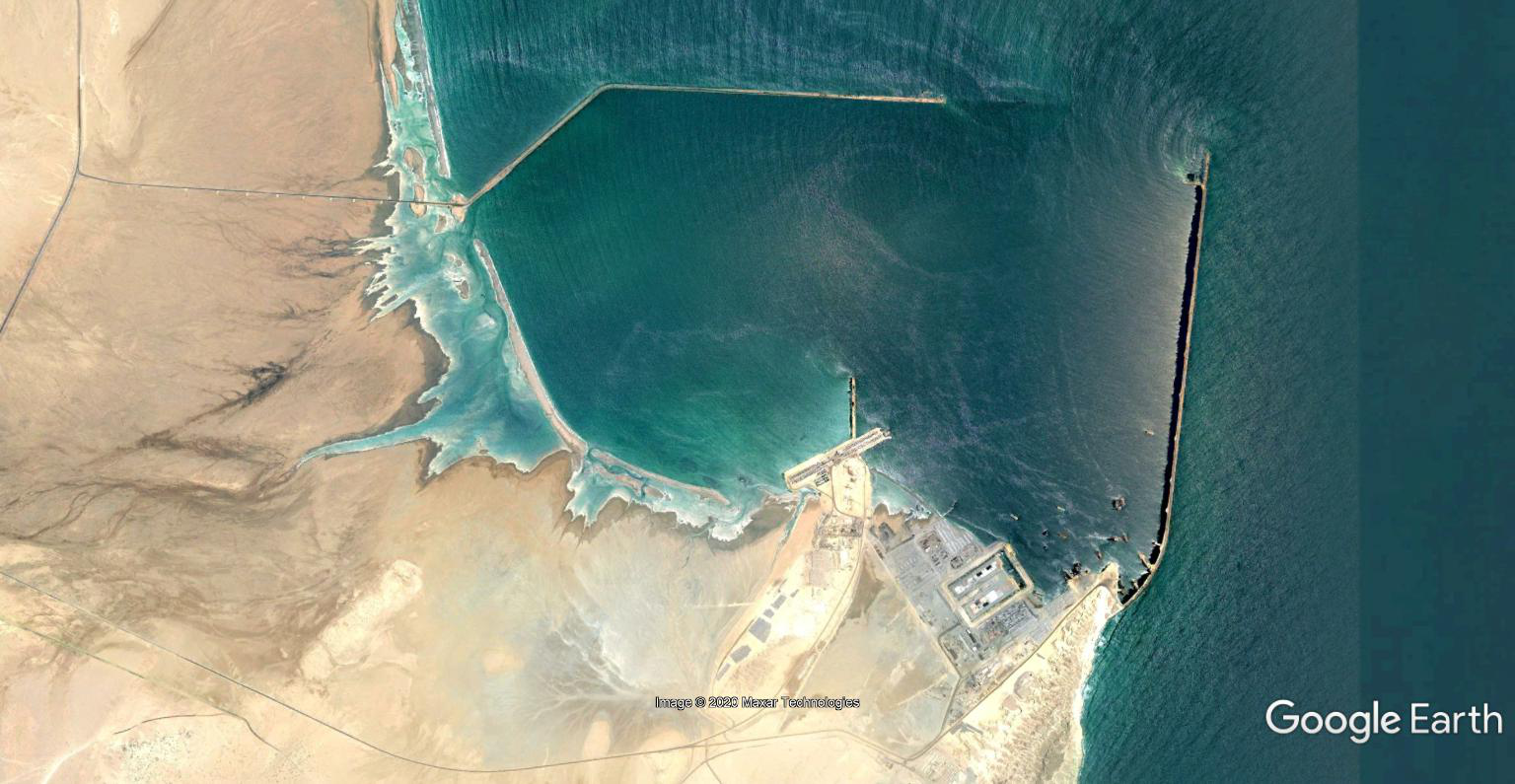
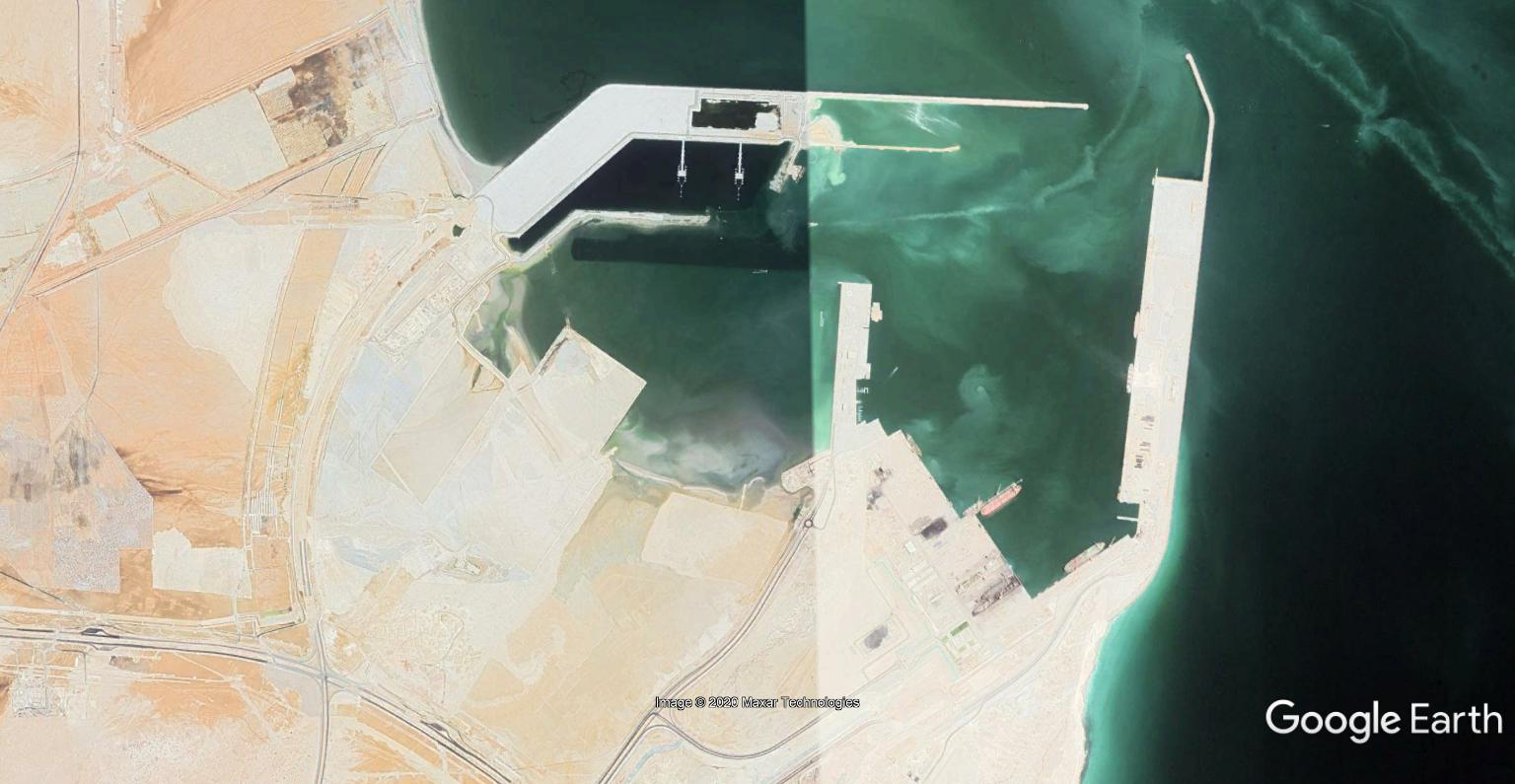
Duqm port expansion, 2009 (top) and 2019 (bottom)
He added that 20 personnel have been temporarily deployed to Duqm as a “UK Port Task Group” to assist with the expansion plans.
Another major development to Britain’s base network in Oman is the new “joint training area” located 70kms south of Duqm at Ras Madrakah, which it has used for tank firing practice. It appears plans are underway to move a large number of Britain’s tanks from their current firing range in Canada to Ras Madrakah.
In Oman, it is a criminal offence to insult the Sultan, so domestic resistance to the new British bases is unlikely to get far.
British forces at Duqm will likely work closely with the US military facility at Diego Garcia on the Chagos Islands, part of the British Indian Ocean territory that belongs to Mauritius under international law. Some 40 UK military personnel are stationed at Diego Garcia.
Britain has refused to return the islands to Mauritius, in defiance of a recent UN General Assembly resolution, after having forcibly removed the indigenous population in the 1970s.
In Iraq, the only democracy in the Arab world which housed British troops this year, the political figures have taken a different approach.
In January, Iraq’s parliament voted to expel foreign military forces, which include the remaining 400 British troops, and which, if implemented, would bring an end to their presence at four sites: Camp Havoc in Anbar, Camp Taji and Union III in Baghdad and Erbil International Airport in the north.
Britain’s other military presence in the Middle East can be found in Israel and Palestine, where around 10 troops are stationed. The team is split between the British embassy in Tel Aviv and the United States security coordinator’s office which is, controversially, based in the US embassy in Jerusalem.
Declassified recently discovered that two British army personnel assist the US team.
Militarised Tax Havens
Another feature of Britain’s overseas military bases is that they are often located in tax havens, with Declassified finding six such sites. Closest to home, these include Jersey in the Channel Islands, which is one of the world’s top ten tax havens according to the Tax Justice Network.
A crown dependency and not technically part of the UK, Jersey’s capital, St Helier, is home to an army base for the Royal Engineers’ Jersey Field Squadron.
Further afield, Britain continues to govern Gibraltar, at the southernmost tip of Spain, amidst demands from Madrid to return the territory which was seized by the Royal Marines in 1704. Gibraltar has a corporation tax rate as low as 10% and is a global hub for gambling companies.
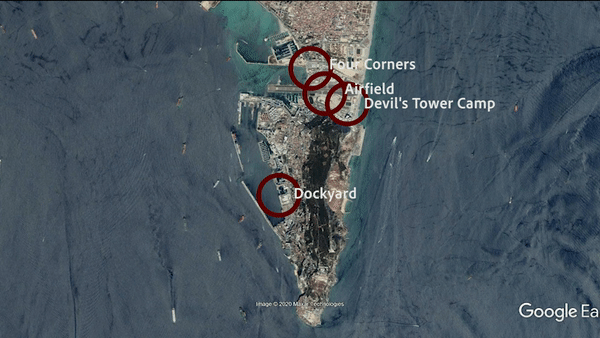
Approximately 670 British military personnel are stationed across four sites in Gibraltar, including at the airport and dockyard. Accommodation facilities include the Devil’s Tower Camp and an MOD-run swimming pool.
The rest of Britain’s militarised tax havens can be found branching out across the Atlantic Ocean. Bermuda, a British territory in the mid-Atlantic, is ranked as the world’s second “most corrosive” tax haven.
It contains a small military site at Warwick Camp, run by 350 members of the Royal Bermuda Regiment which is “affiliated to the British army” and commanded by a British officer.
A similar arrangement exists on the British territory of Montserrat in the Carribean, which is periodically included on lists of tax havens. Security for the island is provided by 40 local volunteers of the Royal Montserrat Defence Force based in Brades.
This model appears to have inspired plans for similar schemes in the Cayman Islands and Turks and Caicos, two British Carribean territories which are both major tax havens.
Since 2019, there have been efforts to establish a Cayman Islands Regiment, which aims to recruit 175 soldiers by the end of 2021. Much of the officer training has taken place at Sandhurst in the UK. Plans for a Turks and Caicos Regiment appear to be less advanced.
The Americas
While these military installations in the Caribbean are unlikely to grow to significant size, the UK presence in the Falkland Islands in the South Atlantic is much larger and more expensive.
Thirty-eight years after the Falklands war with Argentina, the UK maintains six separate sites across the islands. The barracks and airport at RAF Mount Pleasant is the largest, but it relies upon a dockyard at Mare Harbour and three anti-aircraft missile silos on Mount Alice, Byron Heights and Mount Kent.
Their remote nature has given rise to abusive behaviour.
RAF veteran Rebecca Crookshank claims she was subjected to sexual harassment when serving as the only female recruit at Mount Alice in the early 2000s. Naked airmen greeted her upon arrival and rubbed their genitals against her in a crude initiation ritual. Later she was cable-tied to a bed.
The incident is alleged to have taken place in facilities where the MOD subsequently spent £153-million in 2017 to install a Sky Sabre air-defence system, the majority of which is supplied by Israeli arms company, Rafael. The move was criticised at the time, given Rafael’s history of supplying missiles to Argentina.
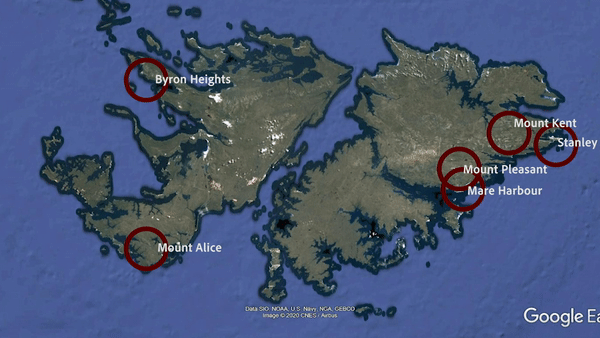
In addition to these sites, there is a local defence camp in the capital of Stanley, while Royal Navy vessels keep a constant patrol offshore.
The net result is a military presence of between 70 and 100 MOD personnel, although the Falkland Islands Government puts the figure much higher: 1,200 troops and 400 civilian contractors.
None of this comes cheap. Stationing soldiers and their families overseas requires housing, schools, hospitals and engineering work, overseen by the government’s Defence Infrastructure Organisation (DIO).
The DIO has a 10-year investment scheme for the Falklands budgeted at £180-million. Almost a quarter of this has been spent on keeping troops warm. In 2016, £55.7-million went on a boiler house and power station for the Mount Pleasant military headquarters complex.
In 2018, Mare Harbour was expanded at a cost of £19-million, mainly to ensure food and other supplies can reach the troops more easily. Cleaning, cooking, emptying the bins and other administrative tasks costs another £5.4-million a year, payable to outsourcing firm Sodexo.
This expenditure has been justified by the government despite a decade of austerity on the UK mainland, which saw 59-year-old army veteran David Clapson die in 2014 after his job seeker’s allowance was stopped. Clapson was diabetic and relied on a supply of refrigerated insulin. He had £3.44 left in his bank account and had run out of electricity and food.
The Falklands also serves as a link to the British Antarctic Territory, a vast area which is reserved for scientific exploration. Its research station at Rothera relies on logistical support from the UK military and is resupplied by HMS Protector, an ice patrol ship in the Royal Navy with around 65 personnel usually onboard.
Maintaining such a ‘forward’ presence in Antarctica and the Falklands is only possible because of another expensive British territory in the South Atlantic, Ascension Island, whose runway at Wideawake Airfield acts as an air bridge between Mount Pleasant and RAF Brize Norton in Oxfordshire.
Ascension recently hit the news with Foreign Office proposals to build a detention centre for asylum seekers on the island, which is 5,000 miles from the UK. In reality such a scheme is unlikely to go ahead.
The runway is in need of costly repairs, and Britain’s secretive spy agency GCHQ has a significant presence there at Cat Hill.
In total there appear to be five UK military and intelligence sites on Ascension, including accommodation at Travellers Hill and married quarters at Two Boats and George Town.
The US air force and National Security Agency operate alongside the UK personnel on the island, a relationship mirrored in the United States where 730 Britons are spread throughout the country.
Many of them are clustered in US military command centres around Washington D.C. and NATO sites in Norfolk, Virginia. The RAF has around 90 personnel based at Creech Air Force Base in Nevada, where they fly Reaper drones on combat operations around the world.
Until recently, there were also major deployments of RAF and Navy pilots at other airfields in the US, where they were learning to fly the new F-35 strike fighter. This scheme saw 80 British personnel conducting long-term training at Edwards Air Force Base (AFB) in California.
Other sites involved in the F-35 training scheme included Eglin AFB in Florida, Marine Corps Air Station Beaufort in South Carolina and the Naval Air Station Patuxent River in Maryland. By 2020, many of these pilots returned to the UK to practice flying the F-35s from the Royal Navy’s new aircraft carriers.
In addition to these deployments, there are British military officers on exchange to a wide range of US units. In September 2019, British Major General Gerald Strickland held a senior role at the US army base in Fort Hood, Texas, where he was working on Operation Inherent Resolve, the mission to combat Islamic State in the Middle East.
There have also been British personnel stationed inside President Trump’s much derided Space Force. Last December, it was reported that the Deputy Director of the Combined Space Operations Center at Vandenberg Air Force Base in California was “Group Captain Darren Whiteley – a Royal Air Force officer from the United Kingdom”.
One of the few British overseas bases that looks threatened by the government’s defence review is the tank training range at Suffield in Canada, where around 400 permanent staff maintain 1,000 vehicles.
Many of these are Challenger 2 tanks and Warrior Infantry Fighting Vehicles. The Defence review is expected to announce a reduction in the size of Britain’s tank force, which would decrease the need for a base in Canada.
However, there is no sign that Britain’s other major base in the Americas, in Belize, will be axed by the review. British troops maintain a small garrison at Belize’s main airport from where they have access to 13 sites for jungle warfare training.
Declassified recently revealed that British troops have access to one sixth of Belize’s land, including a protected forest area, for such training, which includes firing mortars, artillery and “machine-gunning from helicopters”. Belize is one of the world’s most biodiverse countries, home to “critically endangered species” and rare archaeological sites.
Exercises in Belize are run by the British Army Training Support Unit Belize (BATSUB), located at Price Barracks near Belize City. In 2018, the MOD spent £575,000 on a new water treatment plant for the barracks.
Africa
Another region where the British military still maintains military bases is Africa. During the 1950s, the British army suppressed anti-colonial fighters in Kenya by using concentration camps where prisoners were tortured and even castrated.
After independence, the British army was able to retain its base at Nyati Camp in Nanyuki, Laikipia County. Known as BATUK, it is the hub for hundreds of British army personnel in Kenya.
Britain has access to five more sites in Kenya and 13 training grounds, which are used for preparing troops before they deploy to Afghanistan and elsewhere. In 2002, the MOD paid £4.5-million in compensation to hundreds of Kenyans who had been injured by unexploded weaponry fired by British troops at these training grounds.
From Nyati, British soldiers also make use of the nearby Laikipia air base, and the training ground at Archers Post in Laresoro and Mukogodo in Dol-Dol. In the capital Nairobi, British troops have access to Kifaru Camp at Kahawa Barracks and an International Peace Support Training Centre in Karen.
An agreement signed in 2016 set out that: “The Visiting Forces shall respect and be sensitive to the traditions, customs and cultures of local communities of the places where they are deployed in the Host Nation.”
British soldiers are also known to use local sex workers.


